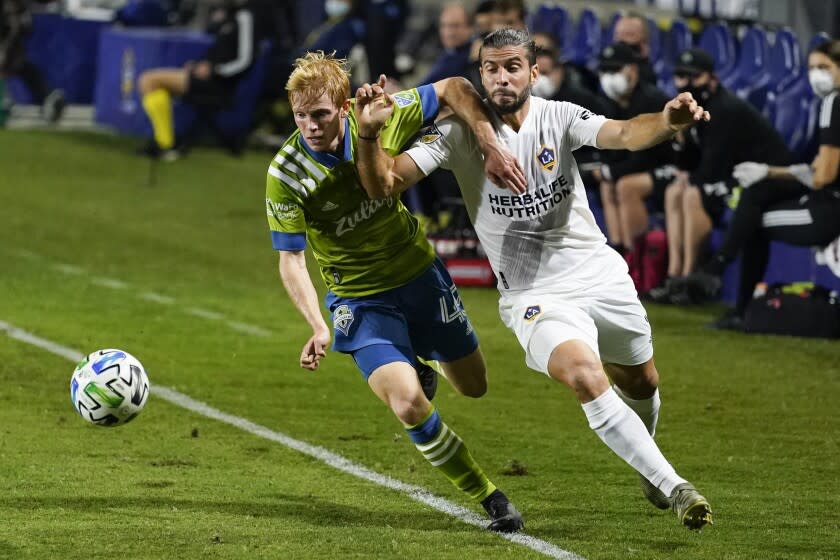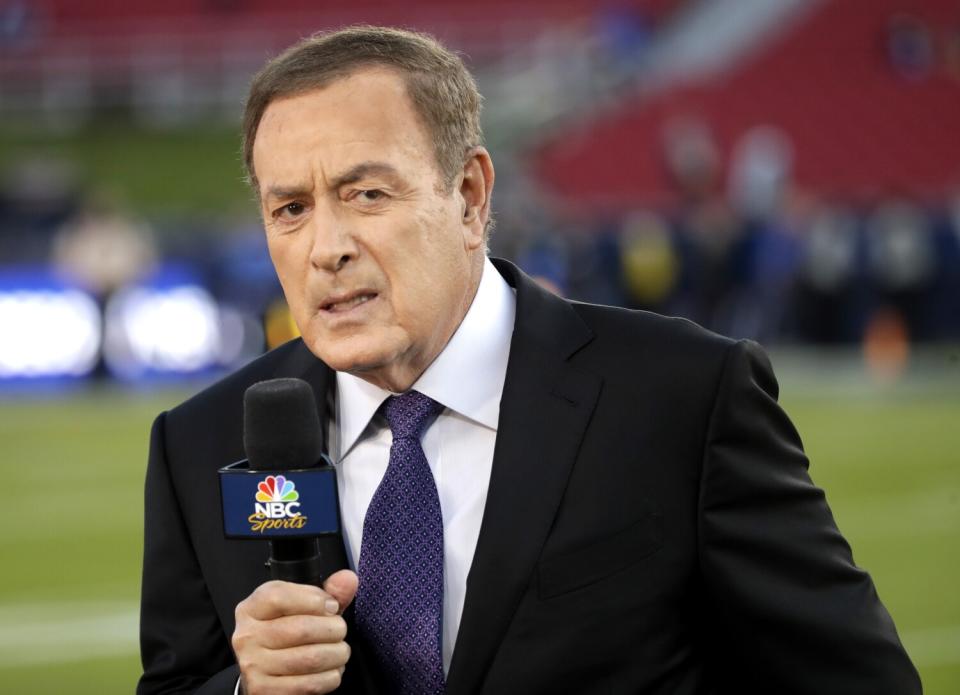Will live sports disappear from traditional TV ?

Streaming video platforms have been scooping up viewers who watch scripted shows and movies, leaving live sports as the last bastion of traditional TV.
The solid ratings for the NBA Finals on ABC and the audience growth for NHL's Stanley Cup on ESPN are further proof of the resilience of those events in the face of a fractured TV landscape. Live sports accounted for 75 of the 100 most-watched programs in 2021.
But how long can the legacy companies stay in the game?
That question gained new urgency last week when Apple made a significant statement to the media business with its deal to be the primary carrier of Major League Soccer. The Cupertino, Calif.-based tech giant will guarantee the league around $200 million annually in the 10-year pact — far more than any TV network was willing to pay for the rights.
It follows Amazon’s deal to shell out $1 billion a year for exclusive rights to NFL’s “Thursday Night Football” after the company shared it with broadcast TV networks for several years. Amazon paid a multiple of what those networks were willing to shell out after they lost hundreds of millions of dollars on the package in past years.
For media conglomerates that still depend on the large audiences sports deliver, the notion of deep-pocketed tech companies going after their most reliable content gives them some pause. While it’s not an immediate threat to their business — the next NFL deal, which is still predominantly on broadcast and cable, runs for 11 years — the moves by Apple and Amazon could be a glimpse into the future.
MLS is not among the most popular American sports properties. But many industry insiders believe Apple will use it as a showcase to demonstrate its ability to present, grow and nurture the league. It could demonstrate its viability as a media partner for other sports entities.
The NBA's current deal is up after the 2024-25 season, and the league is said to be looking to triple its current annual take of $2.6 billion, while Pac-12 college football games are available in 2024.
Apple and Amazon are also expected to vie for the rights to the NFL’s Sunday Ticket subscription package, which gives fans access to out-of-market games, a product that helped grow DirecTV’s business.
“It gives them the ability and opportunity to purchase other rights,” said Lee Berke, president of the consulting firm LHB Sports, Entertainment & Media. "You’ve got to work your way up the ladder. You’ve got to be ready to take that on. You can’t immediately go after the NFL and pick up an entire package.”
A sports TV network executive who spoke on the condition of anonymity agreed that the MLS deal, along with Apple’s recent acquisition of a Friday night package of Major League Baseball games, is part of a long-term strategy.
"If they are successful, they will use it as a paradigm to bring to other sports to try to make the case down the road to have other leagues hand them car keys,” the executive said.
Tech firms have their reasons to pay above what legacy media companies believe makes sense for sports properties. Apple wants to get more users for its software and hardware products. For its part, Amazon is using “Thursday Night Football,” which is one of the most-watched programs on TV, as a portal for more Prime memberships, giving users free shipping on retail purchases and access to its other video offerings.

Berke said their goals follow the pattern of live sports helping to drive emerging technologies throughout history. “You want to sell hardware and software, the most effective strategy over 100 years is getting sports properties,” he said.
When radio began in the 1920s, play-by-play of Major League Baseball games was used to grow the medium and promote the sale of sets, even though some team owners were concerned the broadcasts would cut into stadium attendance. Networks and stations were owned by companies such as RCA and Westinghouse, which manufactured radios.
The rise of the National Football League in the 1960s and 70s became the foundation for network TV sports divisions. When Fox acquired NFL rights in the mid-1990s, it put the then-nascent network on equal footing with ABC, CBS and NBC.
In its early years, cable was largely a business of bringing broadcast signals to areas that could not get adequate TV reception. Live sporting events were the first major source of original programming.
“It really was what grew the cable industry,” said Kay Koplovitz, the founder of USA Network. “You had to offer something you couldn’t get from your local TV station at the time. It was the motivation for people to sign up to cable.”
Koplovitz built her enterprise, originally called the Madison Square Garden Network, in the 1970s and '80s by signing deals to carry Major League Baseball, the NBA and the National Hockey League, the Masters golf tournament and U.S. Open tennis at a time when exposure was far more limited on the broadcast networks. ESPN soon followed, becoming the dominant provider of sports for the cable audience and charging the highest fees for subscribers.
Companies in the streaming business are onto the formula. While original programs and movies have put streaming services such as Netflix into the public consciousness, live sports are a far more predictable way to build an audience for a subscription product, thanks to built-in fan bases that span several generations.
"Once you get the rights, you know what you have," Koplovitz said. "It’s different than the Hollywood business in that you pay a lot of money and you never know what you have.”
Soccer is a sport that lends itself to streaming as its audience is younger and more used to streaming video on a device. Paramount Global's Paramount+ streaming services carries the Champions League, which has helped drive new subscriptions and retain users that have already signed on.
Those viewers are growing up without the habit of traditional TV viewing. But there are still more than 70 million homes with satellite and cable and leagues are not looking to give up on the audience. Several TV sports executives said the chance of putting a major sporting event entirely on a streaming platform is at least five years away.
In the meantime, sports leagues and organizations will have to balance streaming and traditional TV in order to maintain critical mass. When games move from TV to streaming exclusively, the audience declines by 30% or more.
"If you eliminate all the other platforms in favor of streaming, you may be getting a short-term financial gain but you’re missing out on a lot of fans who are missing out on broadcast and pay TV," Berke said. "Your strategy going forward is you want to be on every screen."
But leagues and teams know where the future is headed. As cord-cutting of pay TV services continues, regional sports networks are starting to offer their games as a direct-to-consumer streaming subscriptions available without cable.
NESN, which provides the Boston Red Sox and Boston Bruins in the New England region, became the first RSN to make a stream available, charging $29.99 a month.
ESPN — which has seen its pay TV subscriptions drop dramatically over the last decade due to cord-cutting — is also prepared for a post-cable future. Bob Chapek, chief executive of parent Walt Disney Co., said on a recent earnings call that a time will come when the sports service is available to stream without cable. The only question is how soon.
This story originally appeared in Los Angeles Times.

 Yahoo Movies
Yahoo Movies 
